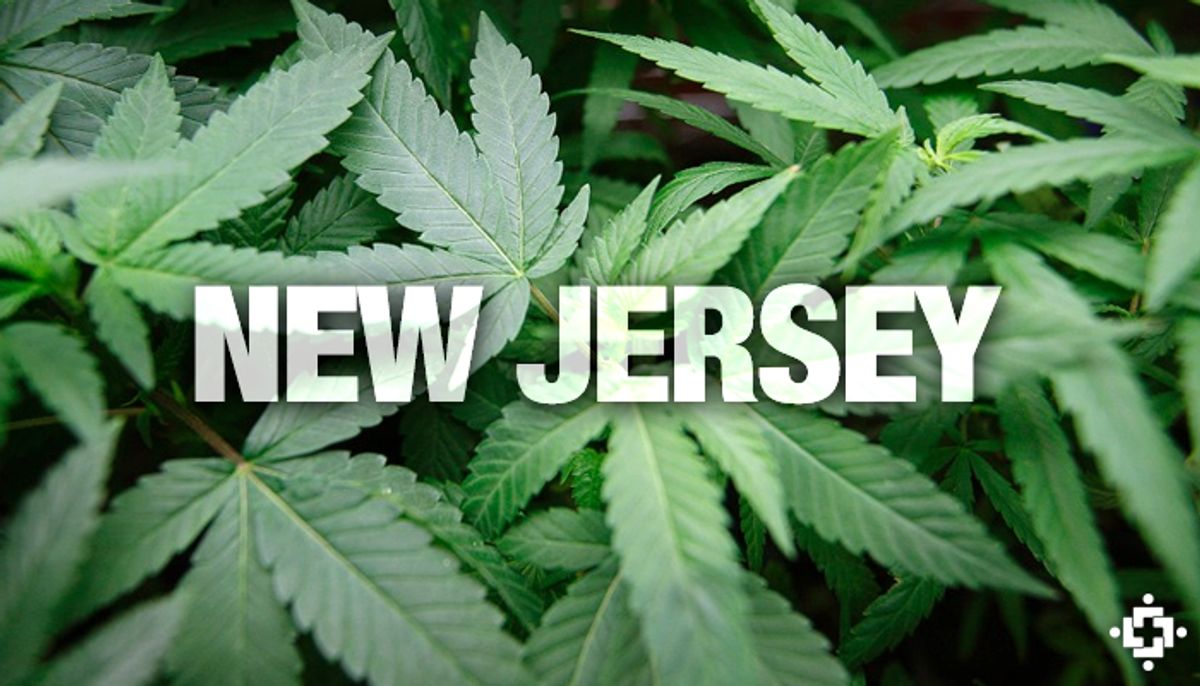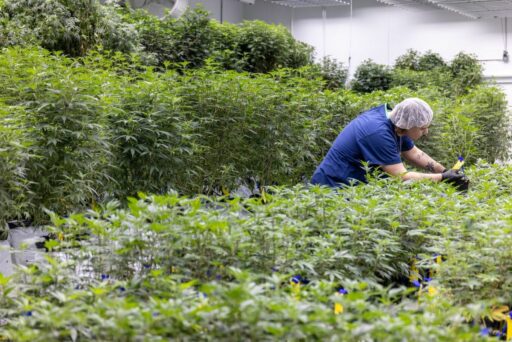As New York navigates the complex waters of marijuana legalization, stakeholders are grappling with a range of issues that impact the market’s stability and growth. From regulatory delays and legal challenges to the quest for an equitable industry, the state’s cannabis laws are under intense scrutiny. This article delves into the current state of New York’s cannabis market, the legal battles being fought, the journey towards a fair industry, the economic consequences of legalization, and the intricacies of the legal landscape for consumers and businesses.
Key Takeaways
- New York’s cannabis market is experiencing significant challenges, including regulatory delays, a prevalence of illicit sales, and complex legal hurdles.
- The state’s legal framework has led to numerous lawsuits, impacting the industry’s development and highlighting issues with taxation and equitable licensing.
- Efforts to prioritize licensing for individuals with marijuana convictions and environmentally sustainable cultivation practices are central to creating an equitable industry.
- Legalization has introduced economic implications, such as tax revenue generation and effects on local businesses, which require careful assessment and comparison with other states.
- For consumers and businesses looking to navigate New York’s cannabis laws, understanding the regulatory environment, consumer protections, and market entry guidance is crucial.
The Current State of New York’s Cannabis Market

Challenges Facing Licensed Retailers
Licensed cannabis retailers in New York are navigating a complex market landscape. The rollout of licensed dispensaries has been slow, causing a bottleneck for growers who are eager to sell their inventory. With the sunsetting of Growers’ Showcases and restrictions on sales to tribal retailers, the struggle to manage both existing and new inventory persists until a sufficient number of retailers can absorb the supply.
The Conditional Adult-Use Retail Dispensary (CAURD) licensing program, established with the legalization of recreational cannabis, has faced its own set of challenges. The early release of licenses to registered organizations has been contentious, impacting both current and prospective CAURD licensees. Despite the state’s commitment to open applications broadly, the reality is that only a handful of retailer businesses have opened to date.
- Licensing complexities and delays
- Limited market access for small business owners
- Legal challenges to the licensing framework
- Lost opportunities for tax revenue and economic growth
The market’s current state reflects lost opportunities for tax revenue, economic growth, and quality control over products. The existing illegal market continues to thrive, partly due to misconceptions about the availability of future dispensary licenses and the slow pace of legal market development.
The Prevalence of Illicit Cannabis Sales
Despite the legalization of cannabis in New York, the market is witnessing a paradoxical surge in illicit cannabis sales. Entrepreneurs are navigating a dual reality, with some legal growers diverting products to the black market as a hedge against the unpredictable legal landscape. This not only undermines the legal market but also poses risks with unregulated products.
The struggle to shut down unlicensed operations is ongoing, with enforcement efforts ramping up outside of New York City. Yet, the persistence of illegal dispensaries continues to be a thorn in the side of the burgeoning legal industry.
The impact of these illicit operations is multifaceted, affecting everything from public health to state revenues. Officials have conducted numerous enforcement inspections, but the challenge remains daunting. The table below illustrates the growth of legal dispensary sales, which contrasts sharply with the thriving illegal market:
| Month | Legal Dispensary Sales (in million $) |
|---|---|
| Jan | 2.2 |
| Nov | 18.8 |
With over $750 million worth of cannabis warehoused due to insufficient legal outlets, the temptation for legal growers to participate in the illicit market is significant. This backlog represents not just a financial loss but also a missed opportunity for tax revenue that could benefit communities.
Legal Hurdles and Regulatory Delays
The journey to establish a regulated cannabis market in New York has been fraught with regulatory hurdles and legal challenges. The state’s efforts to create a fair and equitable marketplace have been significantly hampered by a series of setbacks. Among these, the most notable include the delay of 20 months in proposing regulations, shifting guidance for growers and processors, and the absence of promised state support such as subsidized real estate and loans.
- Denial of federal benefits to farmers leasing land for cannabis cultivation
- Complications in delivery to residents in federal housing
- Lack of bankruptcy and trademark protections for businesses
The regulatory landscape for the cannabis industry remains unsettled, with a trial date set for mid-2024, casting a shadow of uncertainty over the approval of licenses.
The state’s first-to-market advantage has been compromised by the stalling of approvals for CAURD applicants due to ongoing lawsuits. These legal disputes question the social equity provisions and have resulted in a standstill for hundreds of potential businesses. As the industry awaits a resolution, the question looms: What can be done to jump-start the market and prevent it from succumbing to its regulatory complexities?
Legal Battles and Regulatory Hurdles

Recent Lawsuits Impacting the Industry
The legal landscape for New York’s cannabis industry is continually evolving, with recent lawsuits posing significant challenges. A new lawsuit threatens the opening of new cannabis stores in New York, with dispensary companies seeking a federal judge’s intervention to halt the awarding of additional licenses. This legal action, spearheaded by Boies, Schiller, and Flexner, underscores the friction between state legalization efforts and federal marijuana laws that many consider outdated.
Another contentious legal battle involves third-party marketers and information aggregators. A lawsuit filed by Leafly and others directly challenges New York’s ban on these entities from compiling and publishing cannabis pricing and other consumer information, a practice permitted for alcohol but denied for cannabis. This has raised concerns about anti-competitive practices and the transparency of the cannabis market in New York.
Change comes slowly and in incremental steps. The series of lawsuits not only reflect the complexities of the industry but also the growing pains of a market striving to find its footing amidst regulatory uncertainty.
The economic and legal implications of these lawsuits are profound, as they could shape the future of the cannabis industry in New York. Stakeholders are closely monitoring these developments, understanding that the outcomes could have ripple effects across the state’s burgeoning market.
The Taxation and Regulation Landscape
New York’s cannabis market is navigating a complex taxation framework that significantly impacts both businesses and consumers. The imposition of a 13% retail tax on adult-use cannabis products is just one facet of the multifaceted tax structure. This tax is applied to the amount charged for the sale or transfer of cannabis products, adding a substantial cost to the end consumer.
In addition to retail taxes, businesses must contend with a myriad of sales and corporate taxes. The regulatory environment remains in flux, with many details still being ironed out. Compliance is a critical issue, with stringent penalties in place for those who fail to adhere to the tax laws. The uncertainty surrounding the application of these taxes makes it challenging for businesses to forecast their final tax burden.
The landscape of cannabis taxation and regulation in New York is a dynamic and evolving challenge that requires constant vigilance and adaptability from businesses operating in this space.
While federal marijuana tax reform is stalled, leaving state-licensed cannabis businesses at a disadvantage due to higher federal effective tax rates, some states have implemented workarounds. For instance, New Jersey has enacted legislation allowing licensed marijuana businesses to deduct certain expenses on their state tax returns, providing a partial solution to the IRS 280E issue.
The Struggle for Equitable Licensing
The quest for equitable licensing in New York’s cannabis industry has been fraught with legal challenges and complexities. Recent events have highlighted the tension between the state’s goals for social equity and the practical realities of implementing such policies. For instance, a group of seven women-owned marijuana companies has filed a lawsuit alleging that New York regulators did not adhere to the rules when they introduced a "randomized queue" for licensing, which they claim undermines the fairness of the process.
The licensing scheme’s legality has been called into question, with a temporary injunction issued by Justice Bryant suggesting that the awarding of licenses may not have been conducted lawfully. This has significant implications for all applicants, as it could potentially reset the entire licensing process, affecting over 400 hopeful businesses.
The struggle for equitable licensing is not just about providing opportunities but ensuring that the process is transparent, fair, and accessible to those it aims to benefit.
The complexities of the situation are further compounded by the experiences of CAURD licensees, who find themselves caught between the high monetary value of a license and the practical difficulties of securing financing and real estate to commence operations. This underscores the need for a licensing framework that not only offers opportunities but also supports the recipients in realizing them.
The Road to an Equitable Cannabis Industry

Prioritizing Conviction-based Licensing
In the wake of recent legal decisions, New York’s approach to conviction-based licensing has come under scrutiny. The state’s commitment to social equity in the cannabis industry is reflected in its efforts to prioritize individuals who have been adversely affected by previous marijuana laws. However, the complexity of the application process and the criteria for awarding points for ‘justice-involved questions’ have sparked calls for greater transparency and a reevaluation of the system.
The recent ruling by Albany Judge Anne M. Nardacci, which may accelerate the issuance of licenses, highlights the tension between the need for a fair licensing process and the urgency to establish a regulated market. Applicants have expressed frustration over the conflicting requirements for different types of licenses, questioning the state’s intentions regarding social equity versus the humiliation of proving low-income status.
Despite the challenges, the licensing system remains intact, with the Court allowing the submission of names for applicants who have met all requirements as of a certain date. This decision underscores the delicate balance between adhering to legal standards and addressing the hardships faced by licensees due to delays. The plaintiffs, including four disabled veterans, have voiced their concerns over the potential complications arising from individual submissions in the ongoing litigation.
The path to an equitable cannabis industry in New York is fraught with obstacles, yet the state’s efforts to prioritize conviction-based licensing is a step towards rectifying past injustices and fostering inclusivity.
Environmental Considerations in Cultivation
In the pursuit of a greener cannabis industry, New York’s regulations have introduced a tiered licensing system that emphasizes sustainable cultivation practices. The focus on environmental stewardship is evident in the requirements for energy-efficient operations and outdoor growing incentives.
Cultivators are categorized by the size of their ‘canopy’ and the type of cultivation, with tiers ranging from less than 5,000 to 100,000 square feet. This stratification aims to balance the market and encourage eco-friendly methods:
- Outdoor cultivation
- Mixed light sources
- Combination of outdoor and mixed light
- Indoor cultivation
Holders of cultivation licenses are not only tasked with adhering to sustainable practices but are also required to contribute to the industry’s social equity goals. This includes participation in mentorship programs and labor peace agreements, fostering a responsible and inclusive market.
The Office of Cannabis Management (OCM) has proposed regulations that further define these categories and set forth participation in social equity mentorship and sustainability requirements. These efforts are designed to ensure that the cultivation of cannabis in New York is conducted with a conscientious approach to the environment and community.
Assessing the Industry’s Inclusivity Efforts
New York’s cannabis industry is at a pivotal juncture where inclusivity efforts are being scrutinized. Governor Hochul’s announcement of new dispensaries from Brooklyn to Buffalo highlights the state’s expansion efforts. However, the true measure of inclusivity extends beyond the number of dispensaries.
The Cannabis Law’s mission of equity and access is ambitious, aiming to award 50% of licenses to Social and Economic Equity (SEE) applicants. These applicants include those from communities disproportionately impacted by cannabis prohibition, minority and women-owned businesses, distressed farmers, and service-disabled veteran-owned businesses.
The industry’s commitment to inclusivity is also reflected in requirements for safe and sustainable cultivation practices and participation in social equity mentorship programs.
Yet, questions remain about the effectiveness of these measures. What steps are necessary to ensure that the industry does not collapse under its own regulatory weight? For those looking to enter the market, understanding the complexities of these regulations is crucial.
Economic Implications of Legalization

Tax Revenue and State Economics
The legalization of marijuana in New York has opened up new avenues for state revenue, primarily through taxation. The state has set a minimum 18% tax on dispensary sales, with a significant portion of the proceeds earmarked for public services such as behavioral health programs, homelessness initiatives, and youth support. This tax structure aims to benefit the state economically while addressing social issues.
Despite the potential for substantial tax revenue, businesses in the cannabis industry face daunting tax rates due to federal policies. For instance, many cannabis businesses are subject to effective tax rates as high as 80% because of the inability to deduct certain expenses on federal tax returns. To mitigate this, New York has followed the lead of states like California and Colorado by decoupling state tax returns from federal returns, providing some relief to these businesses.
The complexities of the tax landscape for cannabis businesses in New York are significant, with compliance presenting a challenge. The state’s tax revenue from legal cannabis sales is expected to contribute to its economy, but the final tax burden on businesses remains uncertain.
Here’s a snapshot of the tax implications for New York’s cannabis market:
| Tax Type | Allocation |
|---|---|
| Sales Tax | General Fund, Behavioral Health, Homelessness, Youth Programs |
| Corporate Tax | State Revenue |
| Cannabis Taxes | State Revenue, Specific Programs |
The Impact on Local Businesses
The legalization of cannabis in New York has had a significant impact on local businesses, particularly those involved in the burgeoning cannabis market. Local economies are experiencing a dynamic shift as the industry’s infrastructure takes shape, affecting not only dispensaries but also cultivators and processors. Many of these businesses have made substantial investments, with the expectation of a stable regulatory environment.
The Office of Cannabis Management (OCM) has indicated that the current legal injunctions are disrupting the entire cannabis ecosystem. This includes the potential of 54 retail dispensaries, 121 licensed cultivators, and 16 processors. The ripple effect of these disruptions can lead to economic instability for businesses that are interconnected with the cannabis industry.
The state’s approach to cannabis legalization aims to ensure that those who were adversely affected by previous drug policies have opportunities in the new market. However, the slow pace of regulatory enforcement and the collection of fines has raised concerns about the effectiveness of these measures.
Governor Kathy Hochul’s administration is pushing for a more robust enforcement policy to provide the cannabis crackdown with ‘some teeth’. Despite the Office of Cannabis Management assessing $25 million in fines, there has been a notable gap in the actual collection and enforcement, leaving some shops penalized minimally or not at all.
Comparing New York’s Market to Other States
When assessing New York’s cannabis market in relation to other states, it becomes evident that the state’s performance has been underwhelming. New York’s average item price is notably higher than in states like Ohio, reflecting a less competitive market environment. Despite its large population, New York’s taxable sales have been modest, especially when compared to states like Montana and New Jersey, which have seen significantly higher sales figures.
Here’s a quick comparison of taxable sales:
| State | Population Ratio (to NY) | Taxable Sales (2023) |
|---|---|---|
| New York | 1 | $66 million |
| Montana | 1/20th | $170 million |
| New Jersey | Similar | $305 million |
| Connecticut | – | 50% more than NY |
The rollout of legalized recreational marijuana in New York has faced numerous challenges, from federal lawsuits to regulatory delays, which have undoubtedly impacted the market’s growth and performance.
While New York’s market was projected to generate substantial revenue, the actual figures have fallen short. The state’s comparative weakness is a reflection of both legal battles and a slower-than-expected dispensary rollout.
Navigating the Legal Landscape for Consumers and Businesses

Understanding Licensing and Sales Regulations
In New York, the cannabis industry is segmented into various licenses, each with its own set of regulations. Ensuring compliance with these regulations is crucial for businesses to operate legally. The state has outlined eight distinct types of business licenses: plant nurseries, cultivators, processors, distributors, dispensaries, delivery services, microbusinesses, and cooperatives. This structure is designed to separate suppliers from retailers, akin to the state’s alcohol industry model, to avoid market monopolization.
It is imperative for businesses to not only secure the appropriate licenses but also to adhere to the operational procedures that come with them. This includes the prohibition on individuals or entities having stakes across different tiers of the industry, which is enforced to maintain a competitive and fair market.
To navigate the licensing landscape, here are some key steps:
- ENSURE YOU’RE LICENSED: Verify that your business complies with state and municipal requirements.
- FILE AND PAY YOUR TAXES ON TIME: Stay accountable for your financial obligations, regardless of whether your business operates with cash or through banking institutions.
Lastly, use licenses will be awarded based on adherence to these regulations, emphasizing the importance of understanding and following the legal framework laid out by the state.
Consumer Rights and Protections
In the evolving landscape of New York’s marijuana laws, consumer rights and protections are paramount. Consumers should be aware of their rights when purchasing and using cannabis products to ensure they are within the legal framework.
- Right to Privacy: Purchases at licensed dispensaries are protected, and personal information is not to be disclosed.
- Quality Assurance: Products from licensed retailers must meet strict quality and safety standards.
- Legal Recourse: Consumers have the right to legal action if they encounter unlawful practices.
It is essential for consumers to stay informed about the changing regulations and to support licensed businesses that comply with state laws.
Understanding these protections helps maintain a safe and responsible cannabis market. Consumers are encouraged to visit reputable sources, such as a marijuana news website, for the latest updates on dispensaries, laws, and consumer advice.
Guidance for New Entrants in the Market
For new entrants in the market, understanding the complex regulatory environment is crucial. Navigating the intricacies of New York’s cannabis laws requires careful planning and compliance. New businesses must familiarize themselves with the state’s zoning resolutions and the New York State Cannabis Law’s site requirements, as outlined in the NYC Guide to Locating Cannabis Businesses.
- Become well-versed in local and state regulations.
- Seek legal counsel to navigate the complexities of licensing.
- Understand the taxation framework and its implications for your business.
- Establish robust problem-solving and communication skills within your team.
It is essential for new market entrants to not only comply with the regulations but also to be prepared for the detailed and complex guidance that may affect their business strategy. This preparation is key to providing quality products and services, and to compete effectively with both legal and illicit market participants.
Conclusion
As we’ve explored the complexities of New York’s marijuana laws, it’s clear that the state is navigating uncharted waters. With a handful of operational dispensaries, ongoing legal battles, and stringent regulations, the path to a stable and equitable cannabis market is fraught with challenges. Despite these hurdles, New York’s commitment to creating an inclusive and environmentally conscious industry is commendable. The state’s pioneering efforts to prioritize individuals with marijuana convictions for retail licenses and to establish a regulated market are steps towards rectifying past injustices and fostering economic growth. However, the success of these initiatives will depend on the state’s ability to adapt to legal setbacks, streamline regulations, and effectively combat the illicit market. As stakeholders continue to shape the future of cannabis in New York, it remains to be seen how these highs and lows will balance out in the quest for a thriving legal cannabis landscape.
Frequently Asked Questions
Is recreational marijuana legal in New York State?
Yes, recreational marijuana is legal in New York State, but there have been significant delays and challenges in the rollout of licensed retail operations.
How many legal cannabis retail operations are currently open in New York?
As of the latest reports, there are only a handful of legal cannabis retail operations open in New York, and these are operating conditionally.
Are there any legal repercussions for illicit marijuana sellers in New York?
Illicit marijuana sellers are operating despite the legalization, often without paying taxes or facing significant law enforcement action.
What are the main legal hurdles facing New York’s cannabis industry?
New York’s cannabis industry is facing a tangle of lawsuits, regulatory delays, and challenges with equitable licensing and taxation.
Who is being prioritized for cannabis retail licenses in New York?
New York is prioritizing individuals with marijuana convictions for the first round of retail cannabis licenses in an effort to create an equitable industry.
What is the state of tax and regulation for cannabis businesses in New York?
Cannabis businesses in New York are contending with a complex system of state and local taxes and regulations that has been criticized for potentially stifling the industry.





